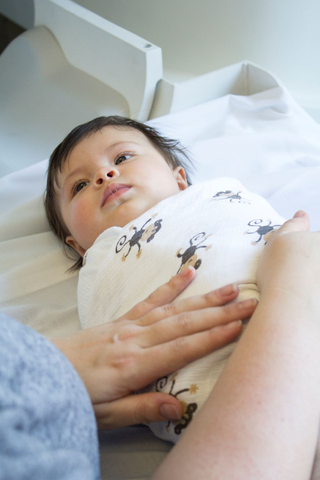
CHAPEL HILL, N.C.– For the first time, scientists have found that brain differences in the visual brain systems of infants who later are diagnosed with autism are associated with inherited genetic factors.
Published in the American Journal of Psychiatry, this research shows that brain changes in the size, white matter integrity and functional connectivity of the visual processing systems of six-month olds are evident well before they show symptoms of autism as toddlers. Moreover, the presence of brain changes in the visual system is associated with the severity of autism traits in their older siblings.
Led by Jessica Girault, PhD, assistant professor of psychiatry at the UNC School of Medicine, this is the first research to observe that infants with older siblings who have autism and who themselves later develop autism as toddlers, have specific biological differences in visual processing regions of the brain, and that these brain characteristics precede the appearance of autistic symptoms. The presence of those visual processing differences is related to how pronounced the autism traits are in the older siblings.
“We’re beginning to parse differences in infant brain development that might be related to genetic factors,” said Girault, who is also a member of the Carolina Institute of Developmental Disabilities (CIDD). “Using magnetic resonance imaging (MRI), we studied selected structures of brain, the functional relationship between key brain regions, and the microstructure of white matter connections between those brain regions. Findings from all three pointed us to the discovery of unique differences in the visual systems of infants who later developed autism.”
As part of the NIH-funded Infant Brain Imaging Study (IBIS) Network, UNC-Chapel Hill and Washington University researchers spearheaded this first-of-its-kind study.

